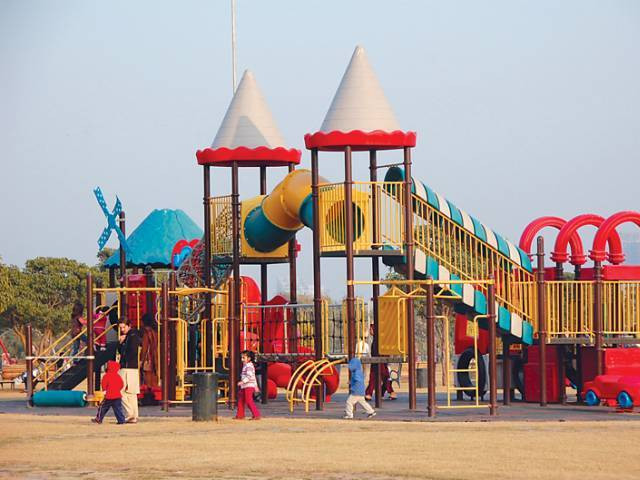Fatima Jinnah Park in Islamabad goes solar
Project to power lights, sprinklers at the park and provide backup energy to IMC offices

Fatima Jinnah Park in Islamabad goes solar
However, the larger water pumps at the park are likely to continue their dependence on the main power grid.
Called the F-9 Park Solar Lighting Project, 3,400 solar panels have been installed over an area of around five acres inside the park. These panels would generate 0.85 megawatts (850KW) of power and have a back-up facility to provide energy to street lights, offices of Islamabad Metropolitan Corporation (IMC) and Capital Development Authority located inside the park.
The project was built by the China Railway 17th Bureau Group Corporation at a cost of $4.8 million. Funds for the project were provided by the Chinese government as a grant. Under the project,
The project was handed over to the IMC in a formal ceremony at the park on Thursday.

The ceremony was witnessed by Federal Minister for Finance Senator Mohammad Ishaq Dar, China’s Ambassador to Pakistan Sun Weidong and IMC Mayor Sheikh Anser Aziz.
On the occasion Dar thanked the Chinese government for the project.
The finance minister added that projects such as the China-Pakistan Economic Corridor, which included energy projects worth $ 34 billion, were an excellent example of the friendship between Pakistan and China.
“The current project is yet another example of the good relations which both countries have had for decades,” Dar said, adding that the incumbent government aims to resolve loadshedding by the end of 2017.
Weidong said that the project was a gift from the Chinese government to the people of Islamabad. He also congratulated Chinese firm for completing the project two months ahead of schedule.
Aziz said the project would be a permanent source of energy supply for the park.
While the project would help power street lights and the sprinkler systems in the park, they are unlikely to power the large water pumps.
This is the second largest solar power facility in the capital. Earlier in February, the Parliament House was completely shifted to solar energy after panels generating 1.8 MW of energy were installed.
However, that solar project lacks a backup facility.
A source in the Capital Development Authority told The Express Tribune that China was likely to bear maintenance costs of the project, including providing backup batteries for five years.
Published in The Express Tribune, December 16th, 2016.



















COMMENTS
Comments are moderated and generally will be posted if they are on-topic and not abusive.
For more information, please see our Comments FAQ